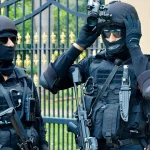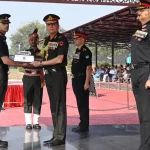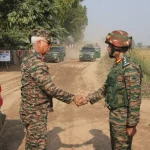When it comes to joining the Indian Armed Forces, two significant pathways stand out: the National Defence Academy (NDA) and the Combined Defence Services (CDS) examination. For aspiring candidates, understanding the nuances between these two exams is crucial for making informed decisions about their future military careers. Each examination serves a distinct purpose, catering to different age groups, educational backgrounds, and career aspirations.
Both the NDA and CDS offer a gateway to serving the nation, and while they share commonalities such as the rigorous selection processes and the prestige associated with military training, the differences are fundamental. Let’s delve deeper into these distinctions, understanding their eligibility criteria, examination patterns, and training processes, illustrating the opportunities each pathway provides for future officers in the Indian Armed Forces.
Historical Context
The Indian Armed Forces have a longstanding tradition of excellence, characterized by a structured recruitment system that has evolved over decades. The NDA was established in 1954, becoming the first tri-service academy in the world, aiming to provide integrated training to cadets from the Army, Navy, and Air Force. The establishment of this institution marked a significant step in shaping a unified defense approach and fostering camaraderie among the cadets.
On the other hand, the CDS was introduced in 1913, primarily as a means to support the Armed Forces by recruiting individuals who had already completed their graduation. The CDS examination seeks to incorporate a more educated workforce into the military, allowing for specialized training tailored to diverse roles within the armed services. Understanding this historical underpinning gives context to why these examinations cater to different demographics, reflecting the changing needs of the Indian Armed Forces.
Key Aspects of NDA and CDS
1. Eligibility Criteria
NDA
- Academic Background: Candidates must have completed or be appearing for Class 12.
- Age Limit: The age of the candidates should be between 16.5 to 19.5 years. This age range allows young individuals to enter the armed forces training immediately after secondary education.
CDS
- Academic Background: Candidates must be graduates or in their final year of graduation from a recognized university.
- Age Limit: Generally ranges from 19 to 25 years, depending on the specific academy (for instance, different limits might apply for the Indian Military Academy and the Officers Training Academy).
This age and educational distinction creates a fundamental separation in the target candidates for each examination—NDA focuses on the youth, while CDS emphasizes higher education.
2. Exam Pattern
The examination structure is pivotal in understanding how each selection process works.
NDA Exam Pattern
- Written Examination:
- Mathematics: 300 marks
- General Ability Test (GAT): 600 marks
- Exam Duration: Total of 5 hours.
- Question Format: Objective type questions are used for both papers, with negative marking for incorrect answers.
CDS Exam Pattern
- Written Examination:
- English: 100 marks (objective)
- General Knowledge: 100 marks (objective)
- Elementary Mathematics: 100 marks (subjective)
- Exam Duration: Total of 6 hours.
- Question Format: The English and General Knowledge sections consist of objective questions with negative marking, while the Mathematics paper requires descriptive answers.
3. Selection Process
Following the written examinations, both NDA and CDS candidates must undergo a five-day Service Selection Board (SSB) interview process, which evaluates various capabilities such as leadership, psychological aptitude, and interaction skills.
This rigorous selection ensures that only the most qualified candidates advance to the training phase.
4. Training Duration and Focus
NDA Training
- Duration: 3 years at the NDA, followed by an additional year of specialized training for each service.
- Focus: Joint training fosters a spirit of teamwork and collaboration while preparing cadets for roles in the Army, Navy, and Air Force.
CDS Training
- Duration: 12-18 months, depending on the academy (such as the IMA or OTA).
- Focus: Specialized training tailored to the specific operational needs of each service.
Both programs are designed to equip future officers with the skills necessary to excel in their respective fields while addressing the unique challenges posed by modern military operations.
5. Rank and Stipend During Training
Graduates from both programs enter the Armed Forces as officers, but with different initial ranks:
- NDA Cadets: Typically commissioned as Second Lieutenants or Flying Officers.
- CDS Graduates: Usually start as Lieutenants or Flying Officers.
Both categories of cadets receive a stipend during their training, which is approximately ₹56,100 per month, aimed at providing financial support while they undergo rigorous academic and physical training.
6. Gender Eligibility
Both NDA and CDS examinations are open to both male and female candidates, aligning with modern principles of gender equality in military service. This inclusivity reflects a progressive shift in the Indian Armed Forces, promoting diverse representation within their ranks.
Comparative Analysis
While both examinations serve as pathways into the Indian Armed Forces, their distinct characteristics cater to different candidate profiles.
Similarities:
- Conducting Body: Both NDA and CDS exams are held under the aegis of the Union Public Service Commission (UPSC), ensuring a standardized selection process.
- SSB Interview: The rigorous five-day SSB interview is a common criterion post-written examination, evaluating potential officers’ aptitude.
- Training for Future Leaders: Both pathways ultimately aim to produce future leaders capable of handling the strategic and operational demands of modern military engagements.
Differences:
| Feature | NDA | CDS |
|---|---|---|
| Eligibility | Passed or appearing in Class 12 | Graduate from recognized university |
| Age Limit | 16.5 to 19.5 years | 19-25 years (varies by academy) |
| Exam Pattern | Mathematics and GAT (objective, 5 hours) | English, General Knowledge (objective), and Mathematics (subjective, 6 hours) |
| Training Duration | 3 years at NDA + 1 year specialized training | 12-18 months at respective academies |
| Initial Rank | Second Lieutenant/Flying Officer | Lieutenant/Flying Officer |
| Stipend During Training | Approx. ₹56,100/month | Approx. ₹56,100/month |
Challenges and Solutions
Common Challenges
Both candidates face similar challenges in preparing for these competitive exams:
- High Competition: Both NDA and CDS attract a large number of candidates, making it a highly competitive process.
- Vast Syllabus: Preparing for extensive subjects within limited time frames can be daunting.
Proposed Solutions
- Structured Preparation: Utilizing resources from platforms like SSBCrack and SSBCrackExams can provide structured study materials, including competitive books and online courses tailored to NDA and CDS syllabi.
- Mock Tests and Simulation: Practicing through mock exams and simulated interviews can build confidence and readiness, addressing both exam pressure and procedural requirements.
Future Trends and Predictions
The landscape of defence recruitment is continuously evolving, with emphasis on various trends that can influence future exams:
- Technology Integration: The use of technology in examination patterns (such as online tests) may become increasingly prevalent, streamlining processes and making them more accessible.
- Increased Focus on Soft Skills: With modern warfare dynamics shifting towards cognitive and emotional intelligence, preparation for SSB interviews may increasingly incorporate soft skills training.
- Diversity and Inclusion: As the military focuses on inclusivity, we may see expanded opportunities and support systems for women and marginalized communities within the armed forces.
Conclusion
Understanding the differences between the NDA and CDS examinations is crucial for prospective candidates looking to join the Indian Armed Forces. Each pathway caters to a unique demographic, reflecting not only the educational background of candidates but also their aspirations for service.
With rigorous selection processes and structured training programs, both NDA and CDS play instrumental roles in cultivating leadership and operational excellence within the armed forces. For aspiring candidates, leveraging the right resources, including comprehensive guides from SSBCrack, can enhance their preparation journey, ultimately leading to a fulfilling career in serving the nation.
As this field continues to evolve, staying ahead with informed choices and strategic preparation will empower future leaders to excel in their roles, embodying the values and commitment of the Indian Armed Forces.












